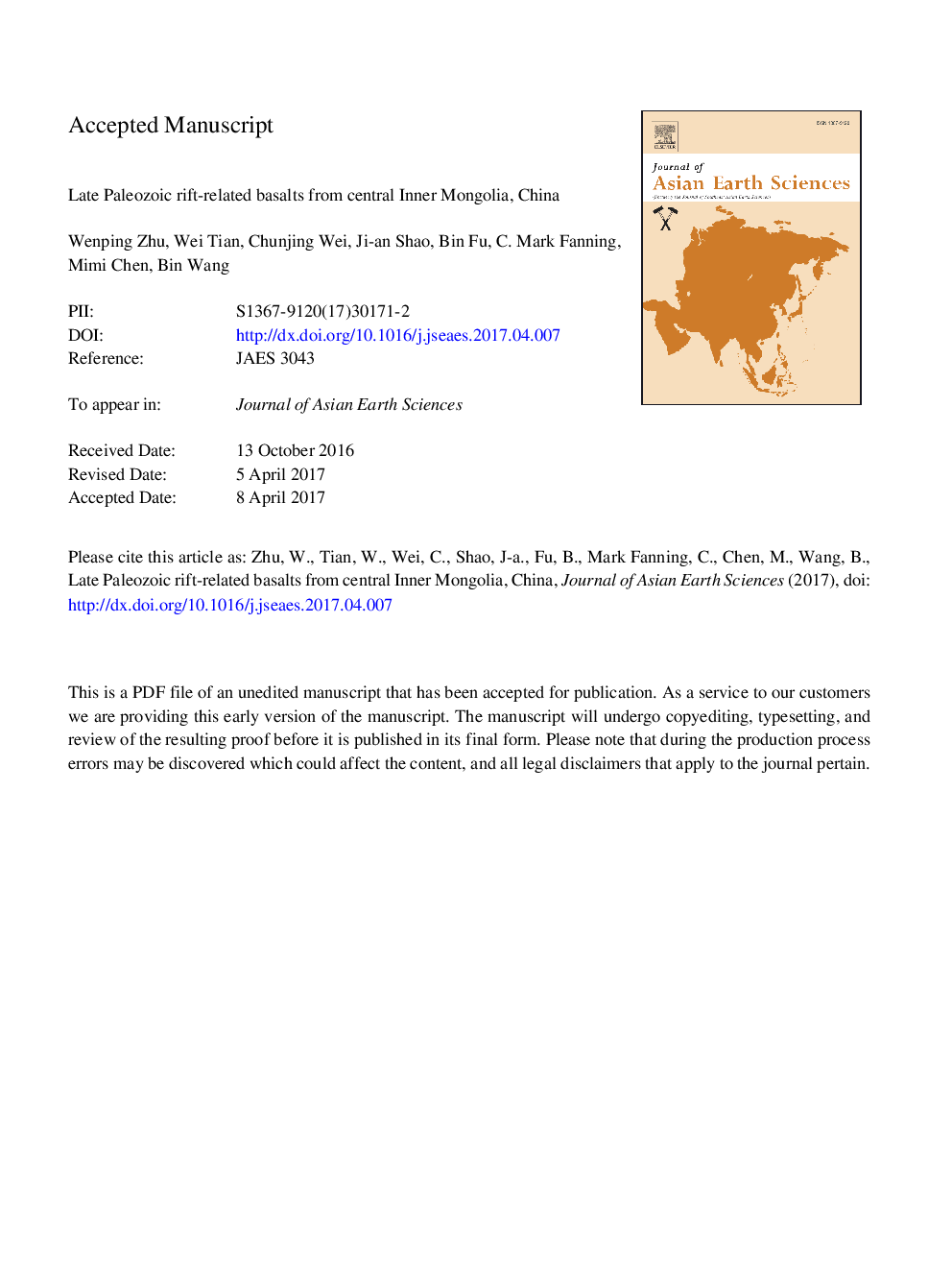| Article ID | Journal | Published Year | Pages | File Type |
|---|---|---|---|---|
| 5785976 | Journal of Asian Earth Sciences | 2017 | 55 Pages |
Abstract
Late Paleozoic basaltic volcanism widely occurred in central Inner Mongolia, the southeastern part of the Central Asia Orogenic Blet (CAOB). Three volcanic pulses are identified by ion microprobe (SHRIMP II) zircon U-Pb analysis, which are Late Carboniferous (ca. 315 Ma), the latest Carboniferous (ca. 303 Ma) and early Permian (ca. 284 Ma). Basalts in the earliest stage are characterized by flat HREE, depletion in Nb and Ta, MORB-like Th/Yb ratios and depleted mantle (DM)-like Hf isotopic ratios. These are similar to forearc basalts, that have been generated by melting of a fluxed depleted mantle in an extensional environment. The latest Carboniferous basalts (sample D1363) have no Zr-Hf anomalies, relatively radiogenic Hf isotopic ratios (εHf(t) = +12.1 to +19.7) and high δ18O values up to 8.5â°, VSMOW. These are likely to be magmas originated from decompressional melting of a depleted mantle that interacted with ocean floor pillow basalts during their ascending through the crust. The early Permian sample D1380 have variable 206Pb/238U zircon ages with an interpreted magma crystallization age of 284.4 ± 2.5 Ma. These zircons have scattered Hf isotope (εHf(t) = +5 to +14) and δ18O (1.8-11.0â°, VSMOW), which suggest the involvement of a relatively enriched mantle source. Overall the temporal evolution of the Late Paleozoic basaltic volcanism from central Inner Mongolia suggests a rift-related tectonic setting.
Related Topics
Physical Sciences and Engineering
Earth and Planetary Sciences
Geology
Authors
Wenping Zhu, Wei Tian, Chunjing Wei, Ji-an Shao, Bin Fu, C. Mark Fanning, Mimi Chen, Bin Wang,
